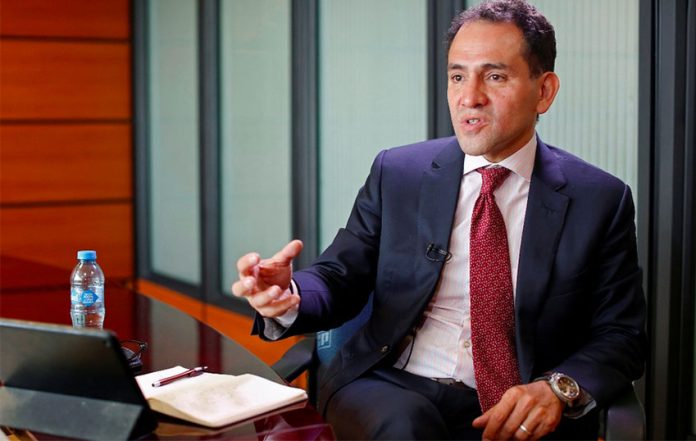Finance Secretary Arturo Herrera is predicting that the economy will bounce back in 2020 after a GDP contraction of 0.1% last year.
In an interview with the news agency Bloomberg, Herrera said that last year’s recession was natural considering the decade of continual growth since the global financial crisis. He also said that the contraction was in line with disappointing levels of growth around the world.
The secretary told Bloomberg at the National Palace in Mexico City that there are various reasons for optimism in 2020, citing inflation and debt levels that are under control, the stability of the peso and Pemex’s halting of an extended production decline.
But the main boost to the Mexican economy is the pending ratification of the new North American free trade agreement, the USMCA, he said. (Mexico and the United States have already ratified the new pact but Canada has not).
“The Mexican economy’s performance is very different with this agreement,” Herrera said. “This is one of the great advantages we have now.”
The secretary said that companies that supply production chains may boost their investment in North America as a result of the certainty provided by the new pact, a modified version of which was signed by Mexico, the United States and Canada in December, especially considering that competing countries in Asia – especially China – are facing trade wars and a health crisis, namely the outbreak of the 2019 novel coronavirus in mainland China.
Bloomberg noted that the Secretariat of Finance and Public Credit (SHCP), which Herrera heads, has maintained its 2020 growth outlook at 2% even as economists have cut their forecasts to an average of just 1% compared to 1.7% six months ago.
The official, who succeeded former finance secretary Carlos Urzúa last July, declined to say whether the SHCP will lower its outlook when it presents a preliminary budget proposal to Congress in April.
With regard to interest rates – cut to 7% by the Bank of México last Thursday – Herrera said that low inflation (3.24% in January) and the stability of the peso (currently 18.6 to the greenback) mean that the central bank “clearly” has room to continue lowering borrowing costs.
“I’m not the only one saying it. It’s something that’s said by the Western Hemisphere director of the International Monetary Fund,” he said.
The Bank of México has cut its benchmark rate by a quarter-point at each of its last five board meetings yet Mexico still has one of the highest inflation-adjusted interest rates in the world, Bloomberg said, adding that analysts predict that the bank will lop another half-point off this year to close 2020 with a 6.5% rate.
With regard to the exchange rate, Herrera said that the government is committed to a stable and flexible currency, explaining that the government’s fiscal responsibility and the relatively high interest rates were behind the strength of the peso, which hit its highest intraday level against the US dollar in almost a year and a half on Monday.
“It’s very risky for somebody to start playing with the exchange rate policy,” he said. “It has cost Mexico a lot of work to understand this and we’re very respectful.”
Source: Bloomberg (en)
